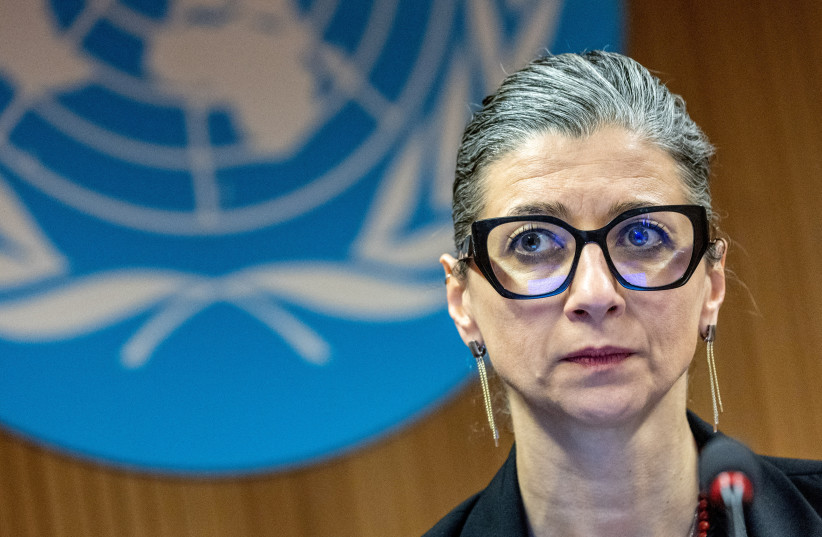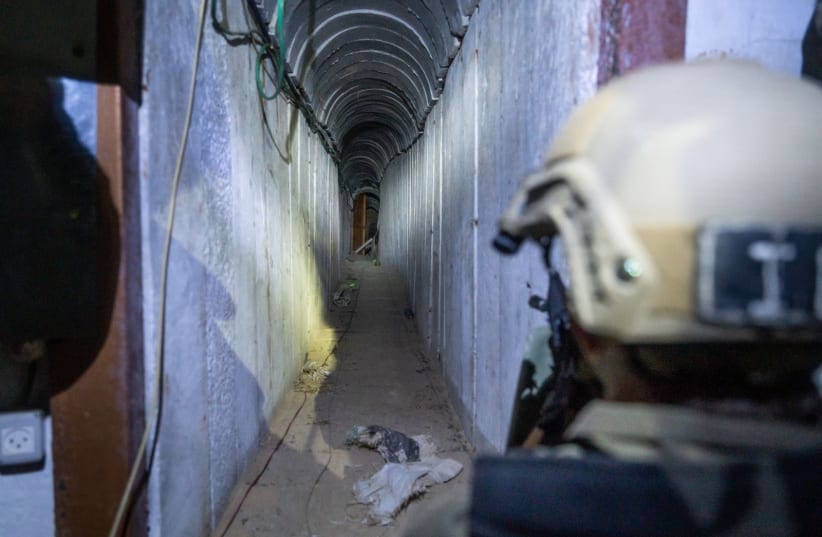The recent accusations by a senior UN official against the Israel Defense Forces, in which she picked a little-known instance of the IDF supposedly using a human shield, shows that she has forgotten or is ignoring Hamas’s long-standing and pervasive practice of using them in the Israeli-Palestinian conflict.
Such are the core tactics aimed at manipulating both military operations and international perceptions.
On Saturday, UN Special Rapporteur Francesca Albanese accused the IDF of using a human shield, citing a video showing an injured Palestinian civilian tied to a military vehicle in Jenin.
The IDF has not commented on the allegations, and the authenticity of the video could not be verified by the Post.
Hamas has used the human shield tactic at least since 2007: placing military assets and personnel in civilian areas to increase the likelihood of collateral damage – civilian deaths and wounded – during Israeli counter-attacks.


These are not incidental tactics but deliberate ones designed to exploit Israel’s efforts to minimize civilian harm and to gain international sympathy for the inevitable collateral damage to civilians.
During the 2014 Tzuk Eitan conflict in Gaza, it was reported that Hamas also used schools, hospitals, and densely populated residential areas to store weapons and launch rockets.
This included the use of the infamous Al-Shifa Hospital, which The Washington Post described as a “de facto headquarters” for Hamas leaders, who could often be seen crisscrossing hallways and taking over back offices.
Many instances of Hamas using human shields
It was also alleged that in the course of that conflict, Hamas used human shields and stored munitions in civilian infrastructure such as civil buildings and UN schools.
In the 2016 border protests, Hamas leader Yahya Sinwar was quoted admitting to using civilians as human shields to make Israeli leaders think twice about bombings and warnings.
All this is part of a larger strategy to turn international law on its head, using civilian suffering as a weapon against Israel.
To be sure, this form of atrocity has shown up even in relatively recent wars. In the ongoing 2023 Israel-Hamas war, the IDF stated that parts of the Hamas military tunnel and command network were also built under civilian infrastructure, including Al-Shifa.
The IDF posted a few videos that it claimed show Hamas operatives using the hospital grounds to carry out military activities, placing patients and medical workers in jeopardy.
Besides that, during the same conflict, Hamas was said to have sent women and children as human shields to areas being targeted, knowing full well that their presence would prevent attacks from Israel or, in the worst case, result in massive civilian casualties that could be used for propaganda purposes.
International bodies and governments have deplored Hamas’s strategy. The United States and the European Union, for example, have recognized that the use of human shields by Hamas is a violation of international law.
This practice not only endangers the lives of civilians but also runs contrary to the very spirit of the fundamental principles behind international humanitarian law, which aims to afford maximum protection to non-combatants during conflict.
IDF does what it can to minimize civilian causalities
The IDF, on the other hand, has put many measures in place that aim to minimize civilian casualties. The military applies a tactic called “roof knocking,” where non-explosive devices are dropped onto the roofs to warn of an incoming airstrike, to give people enough time to run away.
This shows that the IDF does all they can to minimize collateral damage as they target their legitimate military objectives.
What is more, the army often provides an opportunity for evacuation with numerous methods of notification: through leaflets, telephone calls and text messages, calling on people to leave a place that is about to be attacked.
In the 2014 conflict in Gaza City, the IDF dropped thousands of leaflets, urging citizens to flee. These perhaps only partially effective actions represent one of the central attempts to limit human losses among civilians.
Another protective measure involves the use of precision-guided munitions that are employed against some specific threats, minimizing collateral damage.
For instance, the IDF, in hi-tech activities against the tunnel network maintained by Hamas, has been able to target entrances and shafts used to build the tunnels, therefore presenting less risk for collateral damage to surrounding civilian structures.
